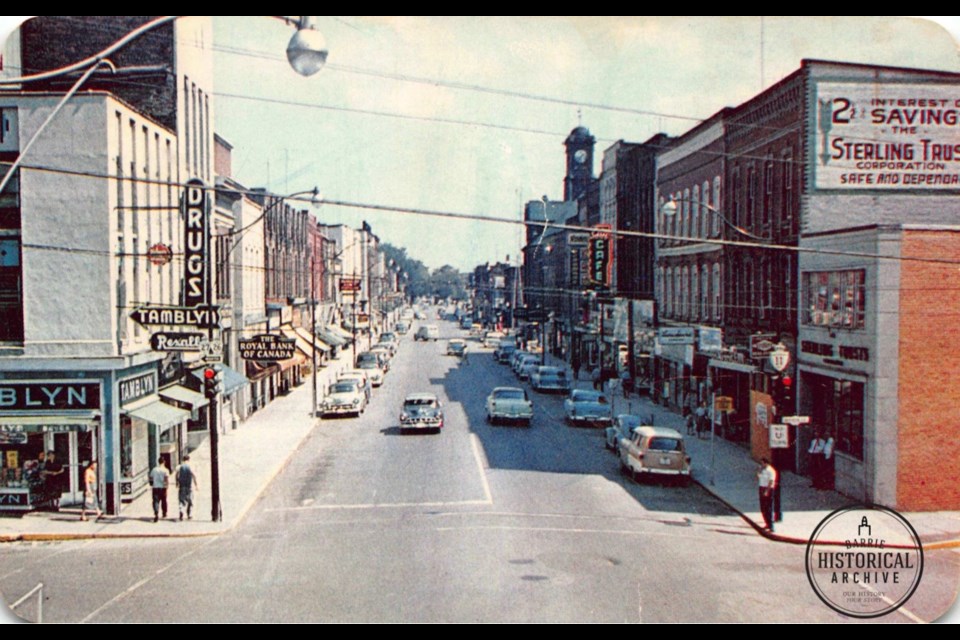It was hot that night. Perhaps Doris had a rear-facing apartment and had some hope of a breeze off Kempenfelt Bay. July nights in Barrie, in those pre-air conditioning days, tended to be pretty stifling.
Doris Ray rented an apartment above a shop at 15 Dunlop St. E. just a few doors east of Five Points. The 43-year-old woman was separated from her husband, Stanley Ray, but did alright for herself as the chief librarian for the Joint Nuclear Biological and Chemical Warfare School at Camp Borden. Doris’ daughters had grown up, married and moved to other towns and her 17-year-old son, Robert, had gone to live with one of them in Hamilton.
Robert was having a hard time finding himself during the summer of 1964. He wasn’t sure that living with his sister, Joan, was exactly what he wanted, and he found himself feeling more than slightly adrift after his parents’ separation. At the beginning of July, he went to live with his mother.
Robert still felt very out of place. His mother worked a lot and was not home much of the time, the rest of his family was scattered and he had to share the apartment space with his mother’s boarder, Robert Shelte*.
On that humid Friday night, the 17th of July, Doris was home. She had some time to talk to her son about his plans for his life. After more than two weeks in Barrie, Doris suggested that Robert might want to seek employment, and that was where the conversation was going when Robert Shelte went out for the evening.
Around 10 p.m., Shelte returned to the Dunlop Street apartment but found it locked. Loud rock music was blaring from the radio and no one was answering the door. The boarder left and returned several times and then finally forced the door open. Something wasn’t right.
After turning the lights on in the darkened apartment, and shutting the radio off, it was not long before Shelte found what must have been the most shocking scene of his life. Doris Ray lay partially dressed in a large pool of blood on the floor of her bedroom. Dead.
Suddenly, the usual Friday night radio calls to the Barrie Police about drunken bar patrons and minor fights were set aside by the sudden and jarring report of a murder in town.
The very dead lady was removed to Royal Victoria Hospital where an autopsy by Dr. Ronald Forbes confirmed the obvious. Doris Ray had been the victim of a homicide. She had several large bruises, seven deep stab wounds and her throat had been cut.
Very quickly, the police gathered enough clues at the scene to be nearly certain that they were investigating Barrie’s first case of matricide. They believed that Robert Ray, suddenly nowhere to be found, had killed his own mother.
Wanted flyers were posted immediately and sightings of the young man described as 5 ft. 9 in., 165 lbs., blue eyes, brown wavy hair and tattooed arms were reported in Gravenhurst to Quebec.
A Barrie witness thought they had seen him walking along the railway tracks near the end of Victoria Street in the hours after the murder, and so an extensive search of Kempenfelt Bay by divers was started. They were looking for a missing black handled carving knife and any discarded bloody clothing.
*Various spellings of the name of Mrs. Ray’s boarder appeared in local papers.
Each week, the Barrie Historical Archive provides BarrieToday readers with a glimpse of the city’s past. This unique column features photos and stories from years gone by and is sure to appeal to the historian in each of us.



